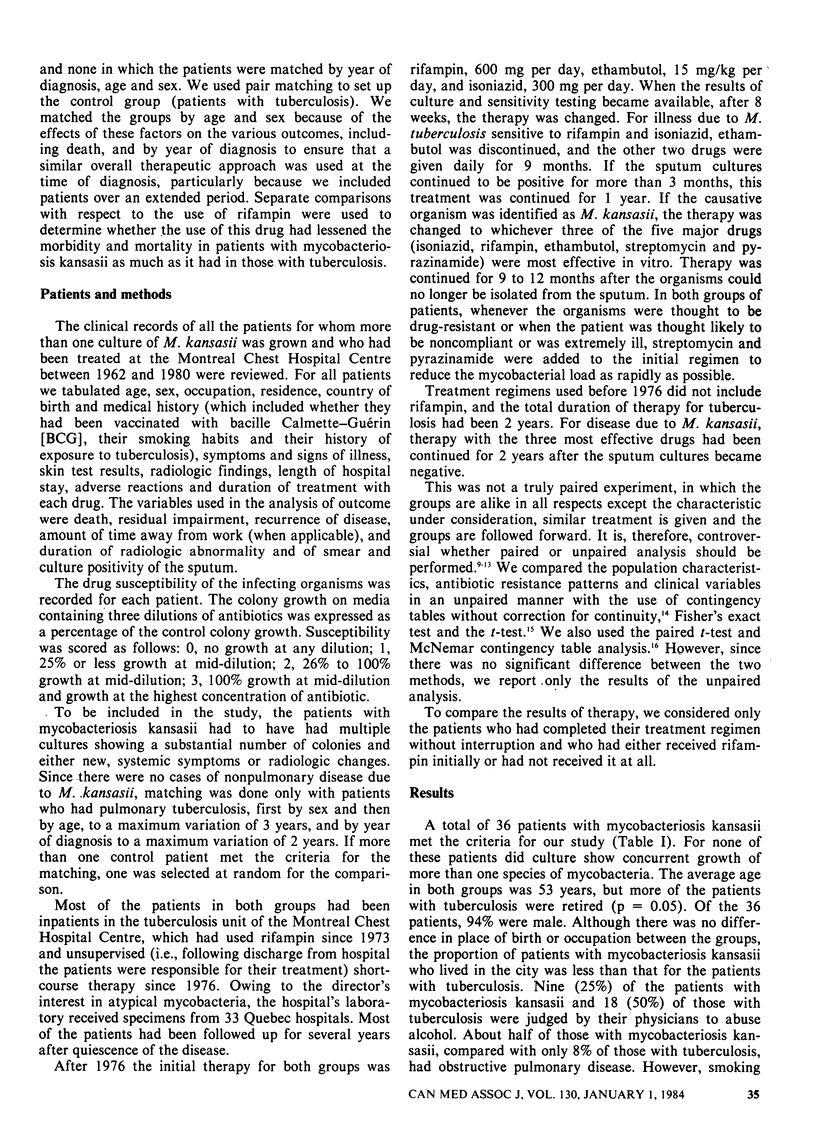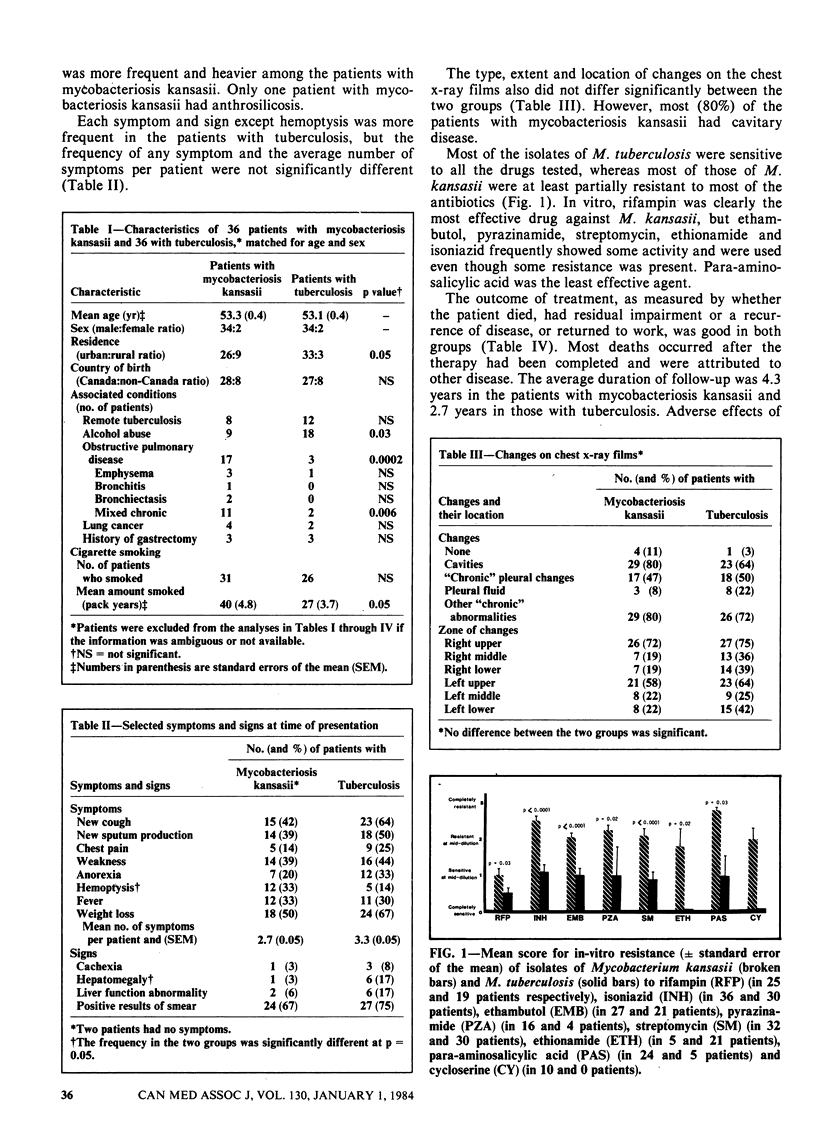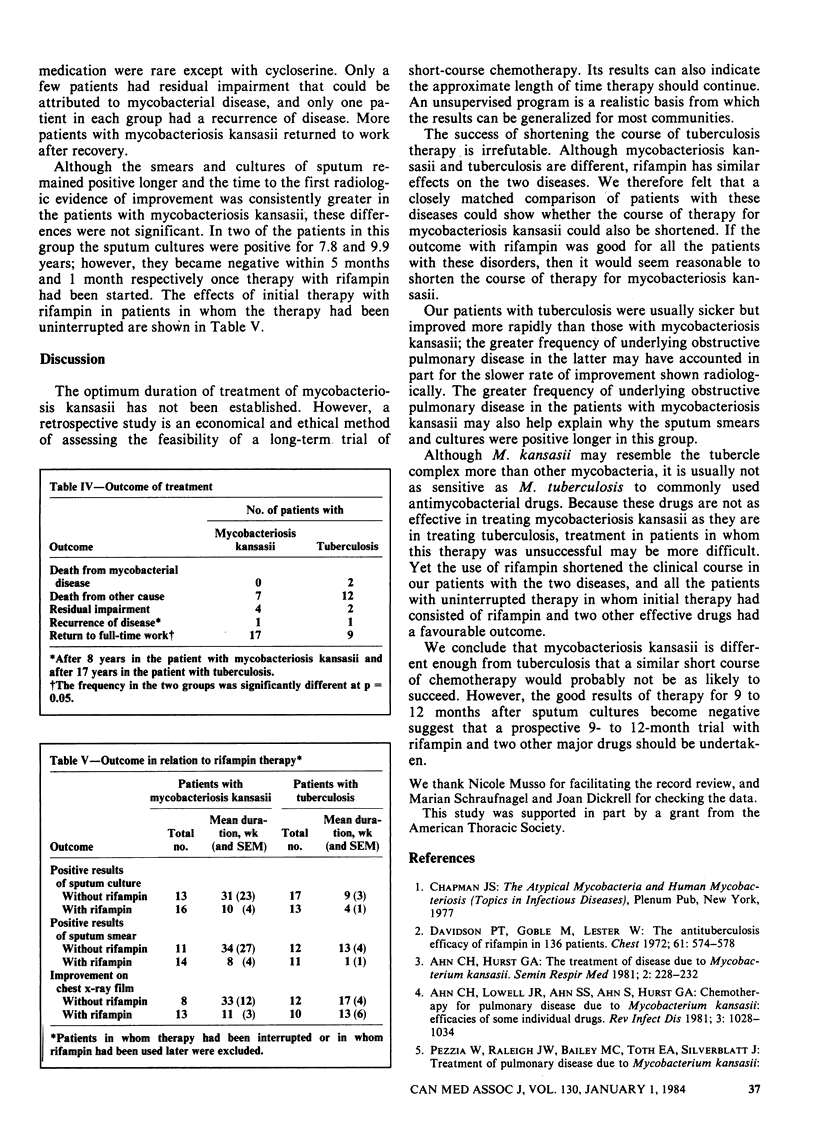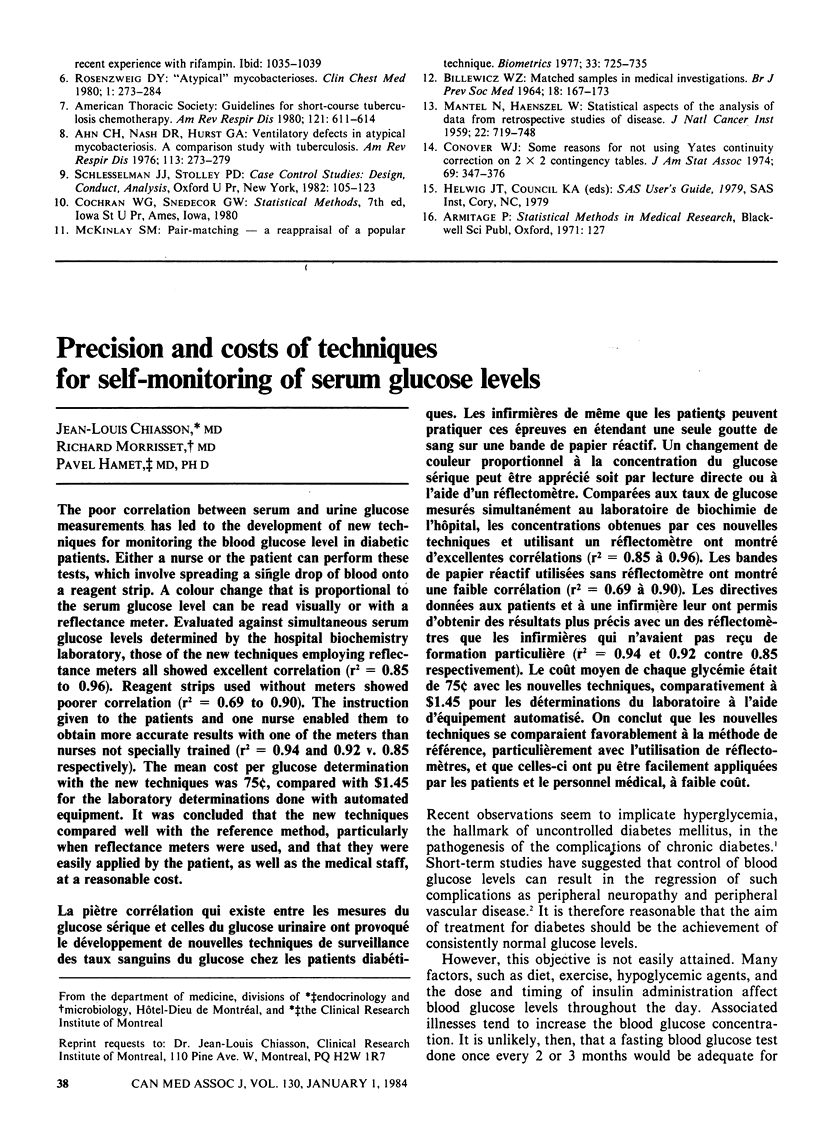Abstract
The success of short-course chemotherapy for tuberculosis, the similarity between Mycobacterium tuberculosis and M. kansasii and the effectiveness of rifampin against the latter organism prompted a comparison of the diseases due to these organisms to assess the feasibility of a prospective trial of short-course chemotherapy in patients with mycobacteriosis kansasii. The two groups of patients were matched for age, sex and time of diagnosis. The patients with mycobacteriosis kansasii more frequently had underlying obstructive pulmonary disease. The clinical course of mycobacteriosis kansasii was more indolent, with a slower rate of improvement according to the chest x-ray films and a longer time before sputum smears and cultures became negative. M. kansasii was significantly more resistant to all the antibiotics, including rifampin. Although these differences from tuberculosis suggest that an equally short course of therapy may not be effective for patients with mycobacteriosis kansasii, the outcome was good in compliant patients who were given the three most effective major drugs for 12 months after the sputum smears and cultures had become negative. Therefore, a trial of modified short-course chemotherapy is recommended for patients with mycobacteriosis kansasii.
Full text
PDF




Selected References
These references are in PubMed. This may not be the complete list of references from this article.
- Ahn C. H., Lowell J. R., Ahn S. S., Ahn S., Hurst G. A. Chemotherapy for pulmonary disease due to Mycobacterium kansasii: efficacies of some individual drugs. Rev Infect Dis. 1981 Sep-Oct;3(5):1028–1034. doi: 10.1093/clinids/3.5.1028. [DOI] [PubMed] [Google Scholar]
- Ahn C. H., Nash D. R., Hurst G. A. Ventilatory defects in atypical mycobacteriosis. A comparison study with tuberculosis. Am Rev Respir Dis. 1976 Mar;113(3):273–279. doi: 10.1164/arrd.1976.113.3.273. [DOI] [PubMed] [Google Scholar]
- BILLEWICZ W. Z. MATCHED SAMPLES IN MEDICAL INVESTIGATIONS. Br J Prev Soc Med. 1964 Oct;18:167–173. doi: 10.1136/jech.18.4.167. [DOI] [PMC free article] [PubMed] [Google Scholar]
- Davidson P. T., Goble M., Lester W. The antituberculosis efficacy of rifampin in 136 patients. Chest. 1972 Jun;61(6):574–578. doi: 10.1016/s0012-3692(15)39158-3. [DOI] [PubMed] [Google Scholar]
- MANTEL N., HAENSZEL W. Statistical aspects of the analysis of data from retrospective studies of disease. J Natl Cancer Inst. 1959 Apr;22(4):719–748. [PubMed] [Google Scholar]
- McKinlay S. M. Pair-matching-a reappraisal of a popular technique. Biometrics. 1977 Dec;33(4):725–735. [PubMed] [Google Scholar]
- Rosenzweig D. Y. "Atypical" mycobacterioses. Clin Chest Med. 1980 May;1(2):273–284. [PubMed] [Google Scholar]


